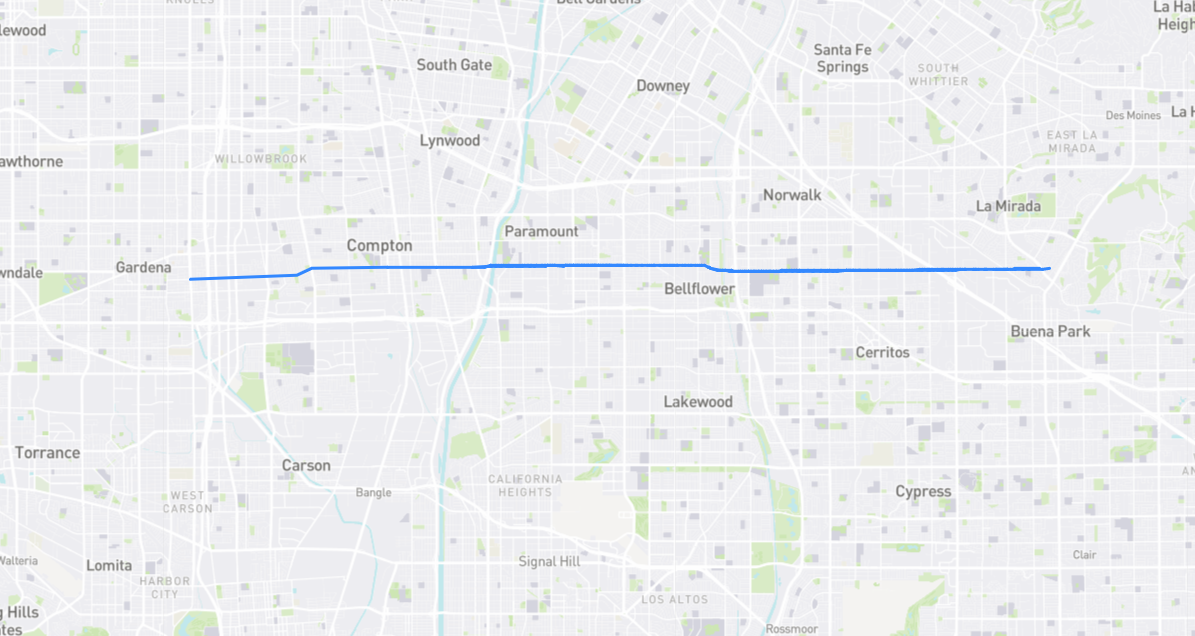Alondra is Spanish for “lark”, as in the songbird, but this street owes its name to a hateful tune. In 1926, the L.A. County Board of Supervisors announced plans to acquire a parcel of undeveloped land between Lawndale, Torrance, and Gardena and create a public space dubbed Alondra Park. It was a thinly-veiled racist act, as white real estate men had influenced the Board to claim eminent domain and swipe 213 acres away from black subdivider Dr. Wilbur Clarence Gordon (1879-1945), who wanted to build an upscale black neighborhood there: Gordon Manor. Alondra Park’s development would languish for decades, due to financial and political setbacks, but the opening of its golf course in January 1950 marked a milestone. That’s when Alondra Boulevard first appeared – in Norwalk, 13 miles east of the park. It wasn’t until 1959 when the boulevard absorbed Olive Street in Compton, Center Street in Paramount and Bellflower, and 161st Street in the City of L.A.’s “Shoestring Addition”. Gardena wouldn’t play along, so 161st has kept its name there and Alondra Blvd. awkwardly terminates three miles short of its eponymous park.
Find it on the map:

